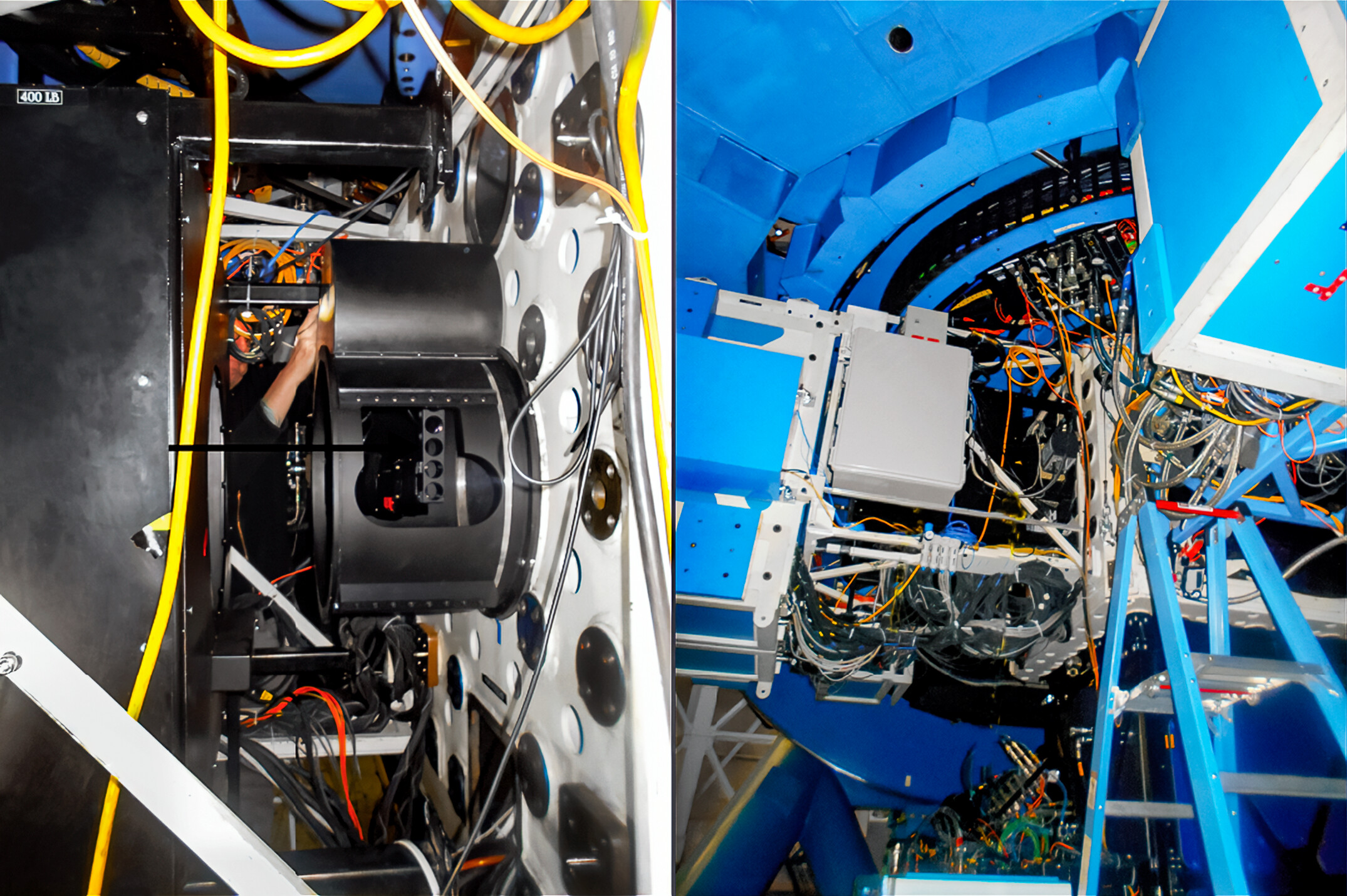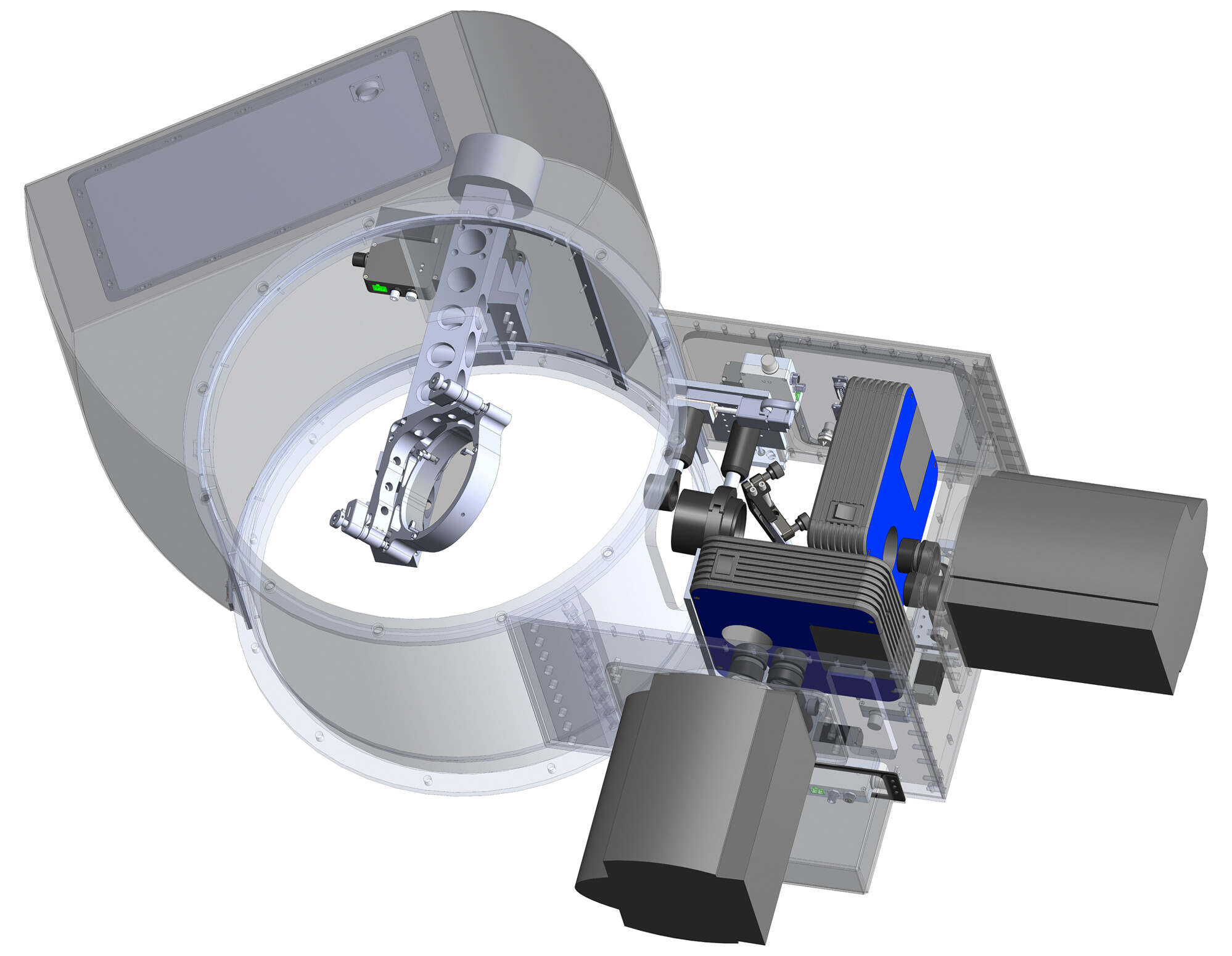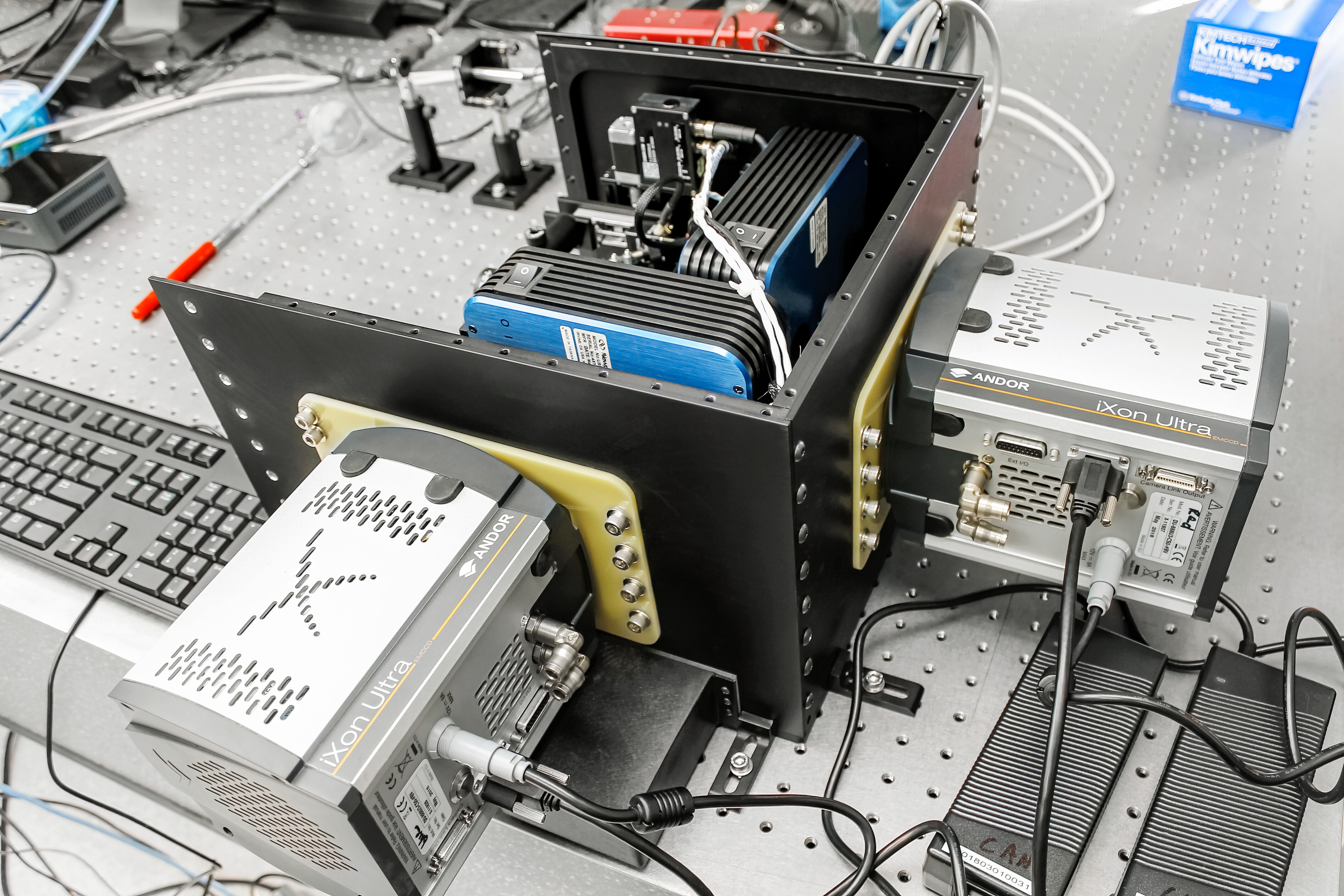‘Alopeke


Left: ‘Alopeke instrument Logo. Right: the `Alopeke instrument mounted at the Gemini North telescope.
‘Alopeke (the Hawaiian word for a fox) is a fast, low-noise, dual-channel, and dual-plate-scale imager based on the legacy of the Differential Speckle Survey Instrument (DSSI). ‘Alopeke is permanently mounted on the calibration port at Gemini North. In speckle mode it provides simultaneous two-color, diffraction-limited optical imaging of targets down to 17th magnitude (V band) over a 6.7-arcsecond field of view, yielding the highest spatial resolution available today on any single-aperture telescope. Its wide-field mode provides simultaneous two-color imaging in standard broadband filters with exposure times as short as 14 milliseconds over the unvignetted 35-arcsecond field of view.
Speckle imaging is a high-resolution astronomical imaging technique that uses very short exposure times to freeze out the effects of atmospheric turbulence. This effectively eliminates distortions caused by Earth's atmosphere to enable angular resolutions equal to the theoretical best possible for a given telescope, delivering space-based resolution from the ground.
‘Alopeke is the second in a line of three speckle imagershttp://web.archive.org/web/20221126101154/https://www.nasa.gov/feature/speckle-instrument-brings-astronomical-objects-into-focus built at NASA’s Ames Research Center for community use at the WIYN 3.5-meter Telescope, Gemini North telescope and Gemini South telescope. The three instruments are functionally similar and include the capability for wide-field imaging in addition to speckle interferometry.
In addition to diffraction-limited speckle imaging it can perform extremely fast photometry down to 2 milliseconds, in either a narrow speckle field of view of less than 10 arcseconds or a non-speckle field of view of one arcminute. To achieve very short exposure times it reads out only a portion of the array of each camera.

The design of ‘Alopeke. A pickoff mirror deflects the light coming from the tertiary mirror, redirecting it into ‘Alopeke. Inside ‘Alopeke, the light is split by a dichroic into red and blue channels to go to their respective cameras equipped with electron-multiplying CCDs (EMCCDs).
Credit: N. Scott/NASA Ames
Science Highlights of ‘Alopeke

The ‘Alopeke CCD cameras during assembly of the instrument.
Quick Facts
|
|
‘Alopeke The technical information for astronomical observations is available at the NOIRLab Science webpage. |
|
| Site | Maunakea |
| Telescope | Gemini North |
| Type | Imager |
| Wavelength range | 350–1050 nm |
| Spatial resolution | 0.0096 arcsec/pixel (Speckle), 0.0725 arcsec/pixel (Wide-Field) |
| Number of detectors | Two iXon Ultra 888 Andor EMCCDs (Science) |
| Detector format | 1024 x 1024 pixels (science) |
| Detector total size |
1 Megapixel |
|
Spectral resolution |
NA |
|
Field of view |
6.7 arcseconds Speckle 60 arcseconds Wide-Field |
|
Filters |
10 filters: five wide-band: u',g',r,'i',z'; four medium-band centered at 466, 562, 716 and 832 nm and one narrow-band (H-alpha) |
|
Date of first light |
April 2018 |
|
Science goals |
A primary role of the ‘Alopeke instrument is exoplanet validation for the Kepler, K2, TESS, and many radial velocity programs. Studies of binary stars. Star-forming regions in galaxies. Globular clusters Solar System objects. |
|
Images taken with the instruments |
Link |
|
Images of the instrument |
Link |
|
Videos of the Instrument |
Link |
|
Press releases with the instrument |
Link |